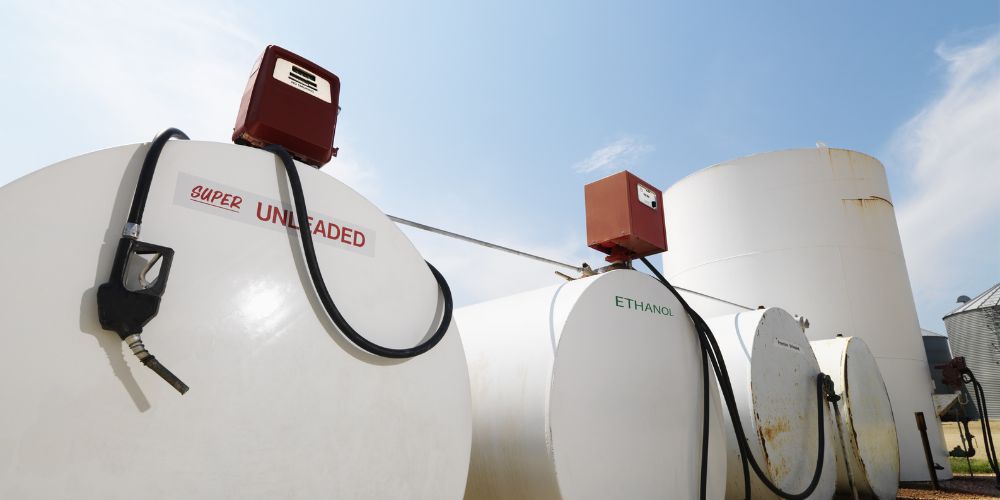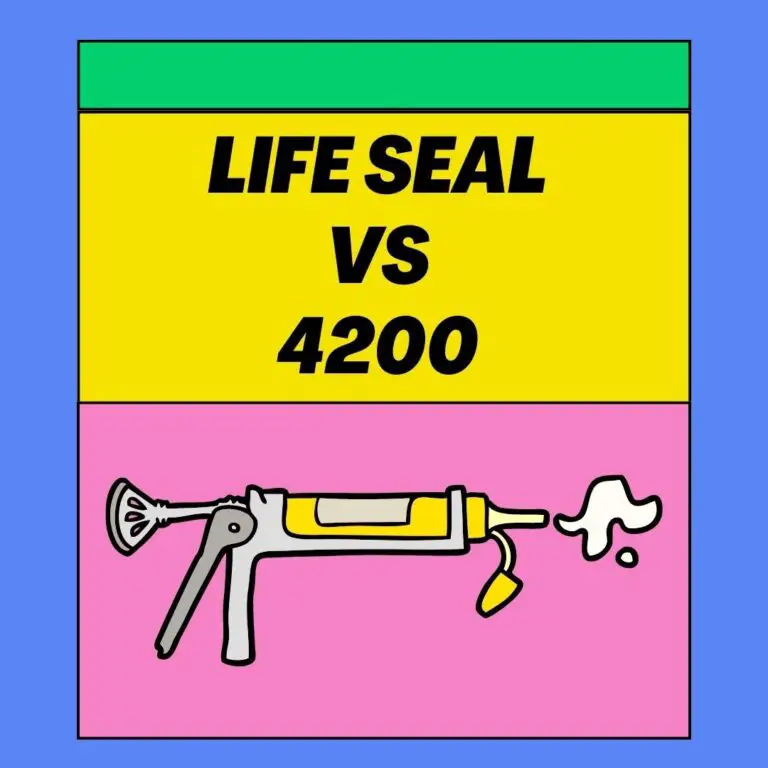
Cleaning an old diesel fuel tank can be a challenging and potentially hazardous process. However, by following the right steps and precautions, you can ensure that your fuel tank is thoroughly cleaned and ready for use. Here is a general process to clean an old diesel fuel tank:
10 Steps To Clean A Fuel/Gas Tank Sitting for a Long Time
- Drain the fuel tank: First and foremost, you need to empty the fuel tank completely. Use a pump or a siphon to remove all the diesel fuel from the tank.
- Remove any debris: Once the fuel tank is empty, remove any debris, sludge, or sediment that may have accumulated in the tank. You can use a hand pump or a vacuum cleaner to remove any remaining fuel and debris.
- Add a cleaning solution: Next, add a cleaning solution to the fuel tank. There are various fuel tank cleaning solutions available on the market, and you can choose the one that suits your needs. Follow the instructions on the product label to determine the right amount of solution to add to the tank.
- Agitate the cleaning solution: Once the cleaning solution is added, agitate the tank vigorously. You can use a pressure washer or a handheld scrub brush to scrub the tank’s walls thoroughly. This process will help to break down any sludge, rust, or debris that may have accumulated in the tank.
- Drain the cleaning solution: After the cleaning solution has been agitated, drain it from the tank. Be sure to dispose of it properly, as it may contain hazardous materials.
- Rinse the tank: Once the cleaning solution has been drained, rinse the tank thoroughly with clean water. Repeat this process several times until the tank is free of any cleaning solution residue.
- Dry the tank: After rinsing the tank, allow it to dry completely. Use a clean cloth or air compressor to dry the tank thoroughly.
- Inspect the tank: Inspect the tank for any signs of damage or rust. If you find any, consider repairing or replacing the tank before using it again.
- Replace the fuel filter: Once the tank is dry, replace the fuel filter to prevent any debris or sediment from entering the engine.
- Reinstall the tank: Once the tank is completely dry and inspected, reinstall it in the vehicle and refill it with fresh gas.
Best Diesel Tank Cleaning Materials/products
Several diesel tank cleaning materials and products are available on the market, and the best one for you will depend on the size of your tank, the amount of debris present, and the level of cleaning you require. Here are some of the best diesel tank cleaning materials and products:
- Fuel Tank Cleaner: Fuel tank cleaner is a concentrated formula designed to break down and remove sludge, rust, and debris that may accumulate in diesel fuel tanks. It is an effective product that can help to restore fuel economy and improve engine performance.
- Microbial Fuel Treatment: Microbial fuel treatment is an effective way to clean diesel fuel tanks and prevent the growth of bacteria, fungi, and other microorganisms that can contaminate fuel and cause engine problems. This treatment is ideal for tanks that have been sitting idle for a long time or have been contaminated with water.
- Fuel Tank Vent Cleaner: Fuel tank vent cleaner is an effective product that can help to clean and unclog fuel tank vents, preventing fuel starvation and engine damage. This product is particularly useful for tanks that have been sitting for a long time or have been exposed to harsh weather conditions.
- Diesel Fuel Additives: Diesel fuel additives can help to improve the quality of diesel fuel and prevent the formation of sludge, deposits, and other contaminants that can clog fuel filters and reduce engine performance. Some popular diesel fuel additives include fuel stabilizers, injector cleaners, and lubricity improvers.
- Fuel Polishing System: Fuel polishing systems are designed to clean and polish diesel fuel, removing water, sludge, and other contaminants that can cause engine problems. These systems use a combination of filters, centrifuges, and other technologies to clean and purify diesel fuel, ensuring that it is free from contaminants and ready for use.
When choosing a diesel tank cleaning material or product, it is essential to consider the product’s compatibility with your tank, the level of cleaning required, and any safety precautions that need to be taken during the cleaning process. Be sure to read product labels carefully and follow all instructions and safety guidelines provided.

Best Diesel Tank Cleaning Services
If you are not comfortable or experienced in cleaning your diesel tank yourself, you can consider hiring a professional diesel tank cleaning service. Here are some of the best diesel tank cleaning services:
- Fueltec Systems: Fueltec Systems is a company that specializes in diesel tank cleaning, fuel filtration, and fuel polishing services. They offer comprehensive fuel tank cleaning services using state-of-the-art equipment and methods.
- Tanknology: Tanknology is a national company that provides diesel tank cleaning services, tank testing, and other related services. They have a team of experienced technicians who are trained to clean tanks of all sizes.
- Clean Fuels Associates: Clean Fuels Associates is a company that provides diesel tank cleaning services and fuel management solutions. They have a team of certified technicians who use the latest equipment and methods to clean and maintain diesel tanks.
- Petroleum Containment Inc.: Petroleum Containment Inc. is a company that specializes in diesel tank cleaning, fuel filtration, and fuel polishing services. They have over 30 years of experience in the industry and offer customized cleaning solutions to meet the unique needs of their clients.
- Fuel Tank Maintenance Co.: Fuel Tank Maintenance Co. provides diesel tank cleaning services, fuel filtration, and fuel polishing services to clients across the United States. They use advanced cleaning methods and equipment to ensure that tanks are thoroughly cleaned and free from contaminants.
When choosing a diesel tank cleaning service, it is important to consider factors such as the company’s experience, equipment, and reputation in the industry. Be sure to ask for references and read online reviews to ensure that you are hiring a reputable and reliable service provider.

How To Clean Sludge Out Of A Diesel Fuel Tank
Cleaning sludge out of a diesel fuel tank requires a thorough cleaning process using specialized equipment and cleaning solutions. Here is a step-by-step process for cleaning sludge out of a diesel fuel tank:
- Drain the tank: If there is any fuel left in the tank, drain it out completely. You can use a siphon pump or remove the fuel pump and let the fuel drain out.
- Remove the tank: Remove the fuel tank from the vehicle if possible. This will allow you to clean it more thoroughly and avoid getting any cleaning solution or debris into the fuel lines.
- Inspect the tank: Inspect the tank for any signs of damage or rust. If you find any, consider repairing or replacing the tank before cleaning it.
- Add cleaning solution: Add a diesel tank cleaner that is specifically designed to break down and remove sludge. Follow the instructions on the product label for the recommended amount of cleaner to use based on the size of your tank.
- Agitate the solution: Agitate the cleaning solution inside the tank by shaking it or using a pressure washer. This will help to break down and loosen the sludge.
- Let the solution sit: Let the cleaning solution sit in the tank for several hours or overnight to allow it to fully penetrate and break down the sludge.
- Drain the tank: After the cleaning solution has had time to work, drain it out of the tank completely.
- Rinse the tank: Rinse the tank thoroughly with hot water to remove any remaining cleaning solution or debris. Repeat this step several times to ensure that the tank is completely clean.
- Dry the tank: After rinsing, let the tank dry completely. You can use compressed air or a hair dryer to speed up the drying process.
- Inspect the tank: Inspect the tank for any remaining signs of sludge or debris. If necessary, repeat the cleaning process until the tank is completely clean.
- Reinstall the tank: Once the tank is completely dry and inspected, reinstall it in the vehicle and refill it with fresh diesel fuel.
How To Clean Diesel Tank For Water and Rust
Cleaning a diesel tank that has water and rust requires a thorough cleaning process using specialized equipment and cleaning solutions. Here is a step-by-step process for cleaning a diesel tank for water and rust:
- Drain the tank: If there is any fuel left in the tank, drain it out completely. You can use a siphon pump or remove the fuel pump and let the fuel drain out.
- Remove the tank: Remove the fuel tank from the vehicle if possible. This will allow you to clean it more thoroughly and avoid getting any cleaning solution or debris into the fuel lines.
- Inspect the tank: Inspect the tank for any signs of damage or rust. If you find any, consider repairing or replacing the tank before cleaning it.
- Add a rust remover: Add a rust remover solution into the tank. Follow the instructions on the product label for the recommended amount of rust remover to use based on the size of your tank.
- Agitate the solution: Agitate the rust remover solution inside the tank by shaking it or using a pressure washer. This will help to break down and loosen the rust.
- Let the solution sit: Let the rust remover solution sit in the tank for several hours or overnight to allow it to fully penetrate and break down the rust.
- Drain the tank: After the rust remover solution has had time to work, drain it out of the tank completely.
- Rinse the tank: Rinse the tank thoroughly with hot water to remove any remaining rust remover solution or debris. Repeat this step several times to ensure that the tank is completely clean.
- Add a water remover: Add a diesel fuel water remover solution into the tank. Follow the instructions on the product label for the recommended amount of water remover to use based on the size of your tank.
- Agitate the solution: Agitate the water remover solution inside the tank by shaking it or using a pressure washer. This will help to break down and loosen any water that is present.
- Let the solution sit: Let the water remover solution sit in the tank for several hours or overnight to allow it to fully penetrate and break down any water.
- Drain the tank: After the water remover solution has had time to work, drain it out of the tank completely.
- Rinse the tank: Rinse the tank thoroughly with hot water to remove any remaining water remover solution or debris. Repeat this step several times to ensure that the tank is completely clean.
- Dry the tank: After rinsing, let the tank dry completely. You can use compressed air or a hair dryer to speed up the drying process.
- Inspect the tank: Inspect the tank for any remaining signs of rust or debris. If necessary, repeat the cleaning process until the tank is completely clean.
- Reinstall the tank: Once the tank is completely dry and inspected, reinstall it in the vehicle and refill it with fresh diesel fuel.
It is important to follow safety precautions when cleaning a diesel tank, such as wearing gloves and eye protection and working in a well-ventilated area. Additionally, be sure to dispose of any cleaning solution or debris properly and in accordance with local regulations.
Summary
By following these steps, you can effectively clean an old diesel fuel tank and ensure that it is ready for use. However, it is important to note that cleaning a fuel tank can be a hazardous process, and it is best to consult with a professional if you are not experienced in this type of work.






